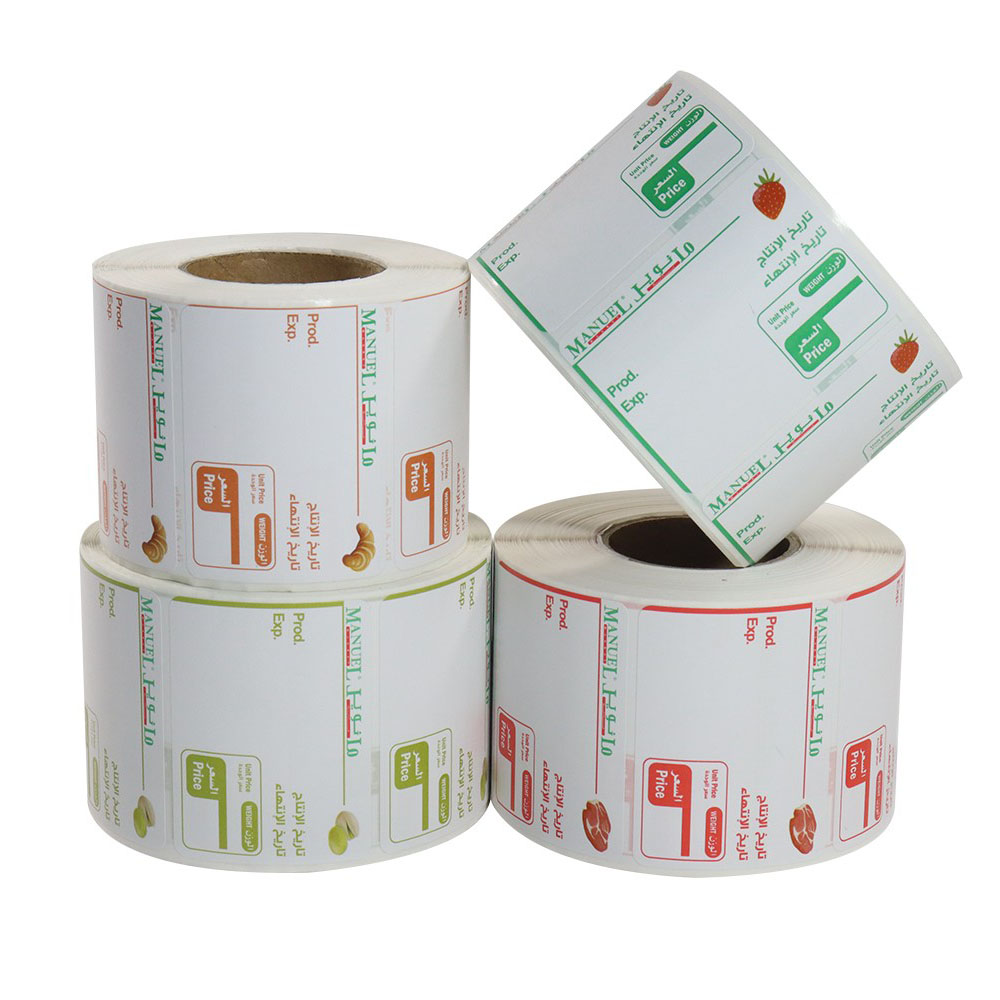Why Are Direct Thermal Labels Revolutionizing Modern Printing Solutions?
2025-10-15
Direct thermal labels represent a pivotal innovation in modern labeling and identification systems, widely adopted in industries ranging from logistics and retail to healthcare and manufacturing. Unlike traditional thermal transfer labels, direct thermal labels use a heat-sensitive coating that reacts to a thermal printhead, eliminating the need for ribbons, ink, or toner. This simple yet efficient printing mechanism makes them a preferred solution for cost-effective and eco-friendly labeling.
The essence of direct thermal technology lies in its chemical formulation. When exposed to heat, the dye within the label reacts and turns black, producing sharp, high-contrast text or barcodes. This process not only ensures precision but also minimizes maintenance, making it ideal for high-volume printing environments.
In today’s fast-paced business world, the need for efficient tracking, inventory management, and compliance labeling has grown exponentially. Direct thermal labels provide a reliable solution that aligns with modern demands for speed, sustainability, and quality.
Key Product Parameters of Direct Thermal Labels:
| Parameter | Specification |
|---|---|
| Printing Method | Direct thermal (no ribbon required) |
| Material | Thermal paper / synthetic film (BOPP, PET options) |
| Adhesive Type | Permanent / removable / freezer-grade |
| Surface Finish | Matte or semi-gloss |
| Core Size | 1 inch / 3 inch (customizable) |
| Roll Diameter | Up to 8 inches (varies by printer compatibility) |
| Temperature Range | -20°C to +70°C (depending on material) |
| Durability | Short to medium term (6–12 months average) |
| Applications | Shipping, logistics, retail, food packaging, healthcare labeling |
| Customization Options | Size, shape, pre-printed logo, barcode compatibility |
The combination of heat-reactive coating and versatile adhesive makes direct thermal labels a practical solution for numerous business applications, particularly where short-term readability and cost-efficiency are crucial.
Why Are Direct Thermal Labels the Preferred Choice for Businesses?
The widespread adoption of direct thermal labels is driven by three main factors: efficiency, sustainability, and cost-effectiveness. Let’s explore each in depth.
(1) Cost Efficiency
Direct thermal printing eliminates ribbons and ink cartridges, significantly reducing both operational costs and maintenance requirements. The printing process is straightforward and requires fewer components, resulting in less downtime and higher productivity. For businesses processing thousands of shipments or inventory tags daily, this efficiency translates to substantial savings.
(2) Environmental Sustainability
As global industries shift toward greener practices, direct thermal labels align perfectly with sustainability goals. They generate less waste because there are no ink ribbons or cartridges to dispose of. Furthermore, recyclable materials and BPA-free coatings are increasingly used in production, supporting eco-conscious supply chains.
(3) Superior Print Clarity
The precision of direct thermal technology delivers high-contrast images ideal for barcode scanning, QR codes, and serial tracking. Whether used in warehouse logistics or retail checkout systems, accuracy and readability remain consistent, reducing scanning errors and improving workflow efficiency.
(4) Versatility Across Applications
Direct thermal labels are used in shipping labels, product tracking, food labeling, patient wristbands, and point-of-sale receipts. Their adaptability across industries makes them indispensable to modern supply chains. For example, in e-commerce fulfillment centers, direct thermal shipping labels ensure smooth logistics, while in healthcare, they provide accurate patient identification without smudging or fading.
(5) Reduced Maintenance and Downtime
With no ribbons to replace and fewer moving parts in thermal printers, maintenance costs are minimized. The simplicity of the system allows staff to print labels on demand, ensuring operations continue uninterrupted.
How Are Direct Thermal Labels Evolving with Future Printing Trends?
The future of labeling technology is moving toward greater automation, durability, and sustainability, and direct thermal labels are evolving to meet these new standards.
(1) Integration with Smart Labeling Systems
Emerging logistics and retail systems now use IoT-enabled labeling, where each direct thermal label carries embedded data linked to cloud-based inventory management. This evolution allows companies to track goods in real time and automate reordering processes.
(2) Enhanced Durability and Resistance
New generations of direct thermal labels are being developed with UV-resistant and moisture-proof coatings, extending their usability beyond indoor applications. These improved materials resist fading from sunlight, moisture, and abrasion—expanding the use of direct thermal labels into outdoor logistics, industrial packaging, and cold-chain transportation.
(3) Sustainable Material Innovation
Manufacturers are transitioning toward BPA-free and phenol-free coatings, as environmental regulations tighten. Recyclable linerless label technologies are also gaining traction, reducing waste by eliminating the need for a label backing. This shift supports eco-friendly labeling that complements global sustainability standards.
(4) Automation and Customization
With the rise of Industry 4.0, direct thermal labels can now be printed on-demand with automated labeling machines. These smart systems can generate variable data—like expiration dates, batch codes, or personalized barcodes—directly from integrated ERP or POS systems.
(5) Market Forecast and Global Adoption
According to industry projections, the global direct thermal label market is expected to grow steadily, driven by e-commerce expansion and logistics automation. Businesses increasingly rely on thermal printing for its low total cost of ownership and high-speed output capabilities, reinforcing its dominance in labeling technology.
Frequently Asked Questions (FAQs) About Direct Thermal Labels
Q1: Why do direct thermal labels fade over time?
A1: Direct thermal labels use heat-sensitive coatings that react to temperature and light. Exposure to UV light, heat, or certain chemicals may cause the print to fade over time. To preserve readability, they should be stored in cool, dry environments and protected from prolonged sunlight. For longer-lasting applications, synthetic direct thermal materials or top-coated variants are recommended.
Q2: What is the difference between direct thermal and thermal transfer labels?
A2: The key difference lies in the printing method. Direct thermal labels do not require ribbons or ink; they react directly to heat. Thermal transfer labels, on the other hand, use a ribbon that transfers ink onto the label surface, resulting in a more durable print suitable for long-term labeling. Direct thermal labels are typically used for short- to medium-term labeling needs like shipping or retail tags.
Q3: Can direct thermal labels be used in cold storage or freezer environments?
A3: Yes, certain direct thermal labels are designed with freezer-grade adhesives and moisture-resistant coatings. These are ideal for refrigerated logistics, frozen food packaging, or pharmaceutical transport, where consistent adhesion and readability are crucial.
Q4: How can businesses choose the right direct thermal label for their application?
A4: The right label depends on environmental factors (temperature, humidity, exposure to light), surface material (plastic, cardboard, metal), and intended shelf life. For example, a standard thermal paper label is ideal for short-term retail tags, while synthetic film labels with protective top coatings are better for outdoor or long-term use.
The Future of Direct Thermal Labels and the Role of GH Printing
The evolution of direct thermal labeling continues to redefine efficiency, sustainability, and innovation across industries. As businesses strive to optimize their supply chains and reduce waste, direct thermal labels serve as a cornerstone technology that bridges convenience and responsibility. From smart logistics systems to environmentally friendly materials, their adaptability ensures relevance in both current and future markets.
GH Printing stands at the forefront of this transformation, offering precision-engineered direct thermal labels tailored for diverse industrial applications. With advanced coating technology, customizable sizes, and a commitment to eco-friendly production, GH Printing ensures that every label performs consistently under demanding conditions.
Whether your business requires high-volume shipping labels, product identification tags, or specialized freezer-grade materials, GH Printing provides a complete labeling solution that meets international quality standards.
For inquiries, customization options, or bulk orders — contact us to discover how GH Printing’s direct thermal labels can enhance your operational efficiency and sustainability goals.



